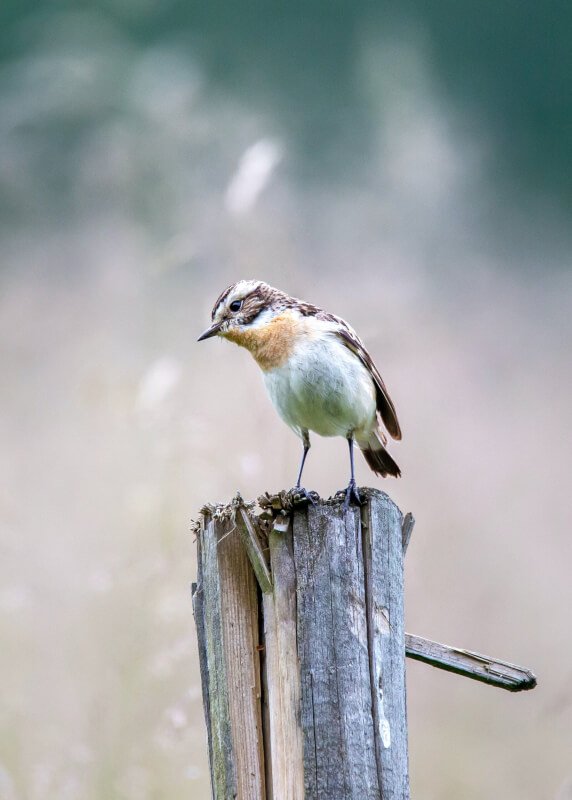If you’re looking to create an urban garden that is bursting with vibrant colors and lush greenery, selecting the perfect plants is key. With so many options available, it can seem overwhelming to know where to start. But fear not! In this article, we’ll walk you through some handy tips and tricks to ensure that you choose the plants that are not only beautiful but also suitable for your urban environment. From considering the available space and sunlight to understanding your personal preferences, we’ve got you covered in your quest to create an urban oasis. So let’s get started on your journey to selecting the perfect plants for your urban garden!

Factors to Consider
When choosing plants for your urban garden, there are several important factors you should consider to ensure success. These factors include climate and hardiness zone, sunlight and shade, soil type and quality, space and size constraints, and maintenance requirements.
Climate and Hardiness Zone
The climate and hardiness zone of your urban garden will greatly impact the types of plants that will thrive in your space. It is important to choose plants that are well-suited to your local climate and can withstand the temperature extremes common in urban environments. Consider the average annual temperature range, frost dates, and typical weather patterns in your area when selecting plants.
Sunlight and Shade
Another crucial factor to consider is the amount of sunlight and shade your urban garden receives. Take note of the hours of direct sunlight your garden gets each day and evaluate how this may change throughout the year. Different plants have varying light requirements, so choose plants that can tolerate the specific light conditions of your garden.
Soil Type and Quality
The soil in urban areas can often be less than ideal for gardening. Conduct a soil test to determine its pH level, nutrient content, and drainage. This will guide you in selecting plants that can thrive in your particular soil conditions. If your soil quality is poor, consider amending it with organic matter or using raised beds or containers to create the ideal growing environment for your chosen plants.
Space and Size Constraints
Urban gardens are often limited in terms of space, so it is important to consider the size constraints of your garden when selecting plants. Opt for plants that are suitable for smaller spaces, such as compact varieties or those that can be trained to grow vertically. Additionally, consider the mature size of the plants and ensure they will not overcrowd your garden as they grow.
Maintenance Requirements
Different plants have varying maintenance requirements, so consider how much time and effort you are willing to dedicate to caring for your urban garden. Some plants may require regular pruning, deadheading, or fertilizing, while others may be more low-maintenance. Choose plants that align with your gardening style and the amount of time you have available for maintenance tasks.
Choosing Suitable Plant Types
Once you have considered the various factors related to your urban garden, it’s time to choose the types of plants that will best suit your needs and preferences. Consider the following plant types:
Perennials
Perennials are plants that live for multiple years, providing beauty to your urban garden year after year. They are a great option for those seeking low-maintenance plants. Perennials come in a wide variety of colors, shapes, and sizes, offering endless possibilities for creating a visually stunning garden.
Annuals
Annuals are plants that complete their life cycle within one year. They are known for their vibrant blooms and continuous flowering throughout the growing season. Annuals are an excellent choice for adding color and interest to your urban garden. Keep in mind that they will need to be replanted each year.
Herbs and Vegetables
If you are interested in growing your own fresh herbs or vegetables, consider incorporating them into your urban garden. Many herbs and vegetables can be grown in small spaces or containers and offer the added benefit of providing delicious, homegrown produce.
Native Plants
Native plants are those that naturally occur in your region. They are well-adapted to the local climate and soil conditions, making them a sustainable and eco-friendly choice for your urban garden. Native plants also provide important habitat and food sources for local wildlife.
Container Plants
Container gardening is an excellent option for urban gardeners with limited space. Many plants can thrive in containers, including flowers, herbs, vegetables, and even small shrubs or trees. Containers offer the flexibility to easily move plants around, providing the opportunity to optimize sunlight exposure and experiment with different arrangements.

Considerations for Urban Environments
Urban environments present unique challenges for plants due to factors such as pollution, winds, drought, noise, and privacy concerns. When selecting plants for an urban garden, consider the following aspects:
Pollution Tolerance
Urban areas often have higher levels of air and soil pollution compared to rural areas. Choose plants that are known to be tolerant of pollution and can withstand the potentially harmful effects. Some plants have the ability to absorb pollutants and improve air quality, making them excellent choices for urban gardens.
Wind Resistance
Urban areas are often subject to strong winds, especially in high-rise buildings or areas without natural windbreaks. Select plants that are wind-resistant and can withstand the drying effects of strong gusts. Look for plants with sturdy stems and foliage that can withstand constant movement.
Drought Resistance
Water availability can be a challenge in urban environments, especially during dry periods. Select plants that are drought-resistant and can survive with minimal water. These plants typically have adaptations such as deep roots or succulent foliage that allow them to thrive even in low-moisture conditions.
Noise and Privacy
Privacy and noise reduction are important considerations for urban gardeners. Select plants that can serve as natural screens or barriers to block unwanted views or reduce noise. Tall shrubs, trees, or climbing vines can create a peaceful and secluded space within your urban garden.
Aesthetic Appeal
Creating an aesthetically pleasing urban garden is important for many gardeners. Consider the overall design and style you want to achieve and select plants that will contribute to that vision. Choose plants with attractive foliage, colorful blooms, or unique textures to create a visually appealing and inspiring urban oasis.
Assessing Plant Health
When choosing plants for your urban garden, it is essential to assess their health to ensure they will flourish in your space. Pay attention to the following aspects when inspecting potential plants:
Inspecting Plant Quality
Examine the overall health and condition of the plants before purchasing. Look for signs of diseases, pests, or damage. Choose plants with sturdy stems, vibrant leaves, and a well-established root system.
Checking for Pests and Diseases
Inspect plants for any signs of pests or diseases. Look for discoloration, spots, holes, or webbing on the foliage. Avoid purchasing plants that show obvious signs of infestation or disease, as they may spread to other plants in your garden.
Investigating Roots and Foliage
Gently remove the plant from its container to examine the roots. Healthy roots should be firm, white, and well-distributed throughout the soil. Avoid plants with crowded or rotting roots. Additionally, check the foliage for any signs of damage, wilting, or discoloration.
Observing Growth Patterns
Observe the growth patterns of the plants you are considering. Look for well-branched plants with strong stems and healthy leaf growth. Avoid plants that appear leggy, spindly, or overly compacted. Healthy plants should exhibit strong, vigorous growth.
Reviewing Maintenance Needs
Consider the maintenance needs of the plants before making your final selection. Determine if the plants require specific pruning, feeding, or watering routines. Choose plants that align with your ability to provide the necessary care and maintenance they require.

Choosing Plants for Specific Purposes
Plants can serve various purposes in an urban garden beyond just providing visual appeal. Consider the following specific purposes when selecting plants:
Air Purification
Certain plants have the ability to purify the air by removing toxins and pollutants. Select plants known for their air-cleansing properties, such as snake plants, spider plants, peace lilies, or pothos. These plants can enhance the air quality and create a healthier environment in your urban garden.
Edible Garden
If you have a passion for homegrown food, consider incorporating edible plants into your urban garden. Choose herbs, vegetables, or even dwarf fruit trees that are suitable for your climate and growing conditions. With careful planning and maintenance, you can enjoy fresh, organic produce grown right in your own backyard.
Privacy and Screening
Sometimes, urban gardens require privacy from nearby neighbors or busy streets. Select plants that can create a natural screen or hedge to block views and provide a sense of seclusion. Tall shrubs, bamboo, or climbing vines can be used effectively to create privacy and screen out unwanted sights.
Pollinator-Friendly Garden
Pollinator-friendly gardens are essential for attracting bees, butterflies, and other beneficial insects. These pollinators play a key role in plant reproduction and biodiversity. Choose plants that provide nectar, pollen, and habitat for pollinators, such as native flowering plants or herbs like lavender or bee balm.
Vertical Gardening
If you have limited floor space in your urban garden, consider utilizing vertical gardening techniques. Vertical gardens make use of walls, trellises, or hanging structures to grow plants vertically, saving valuable space. Choose plants that can climb, vine, or hang to create a beautiful green wall or hanging garden.
Utilizing Space Effectively
Maximizing limited space is crucial in urban gardening. Consider the following strategies to utilize your space optimally:
Vertical Gardening Techniques
Invest in vertical gardening techniques such as trellises, living walls, or vertical planters. These structures provide support for plants to grow vertically, freeing up valuable floor space. Vertical gardening is an efficient way to maximize a small urban garden.
Hanging Baskets and Wall Planters
Hanging baskets and wall planters are excellent choices for urban gardens with limited floor space. These containers allow you to grow plants vertically and free up ground space for other purposes. Hang baskets or planters on walls, fences, or balconies to create a stunning display of cascading plants.
Window Boxes and Balcony Railing Planters
If you have a balcony or windowsill space, take advantage of it by using window boxes or balcony railing planters. These containers can be easily attached to windowsills or balcony railings, allowing you to create a mini garden in these otherwise unused areas. Choose plants that will thrive in the specific light conditions of these locations.
Maximizing Floor Space
If you have limited vertical options, maximize your floor space by carefully arranging your plants and containers. Consider using tiered shelving or multi-level plant stands to create layers and provide more room for plants. Optimize the layout of your urban garden to ensure every inch of available space is utilized efficiently.
Utilizing Trellises and Espaliers
If you have walls or fences in your urban garden, consider utilizing trellises or espaliers. These structures provide support for climbing plants, allowing them to grow vertically against the wall or fence. This not only saves space but also adds visual interest and texture to your garden.
Considerations for Limited Sunlight
Many urban gardens face the challenge of limited sunlight due to nearby buildings or large trees. Consider the following strategies for coping with low light conditions:
Shade-Loving Plant Selection
Choose plants that are well-suited to low light conditions. Shade-loving plants thrive in areas with limited direct sunlight and can provide beauty and interest to your urban garden. Hostas, ferns, astilbes, and impatiens are just a few examples of shade-loving plants to consider.
Indoor Gardening Options
If your outdoor space lacks sufficient sunlight, consider indoor gardening options. Create an indoor garden by placing plants near windows with the most sunlight exposure or using artificial grow lights to supplement the lack of natural light. Select indoor plants that can tolerate lower light conditions and thrive indoors.
Supplementing Light with Grow Lights
Grow lights are artificial light sources that provide the necessary light spectrum for plant growth. If your urban garden lacks adequate sunlight, consider using grow lights to supplement the light requirements of your plants. This allows you to grow a wider range of plants regardless of the available natural light.
Creative Use of Reflective Surfaces
Make the most of the limited sunlight in your urban garden by utilizing reflective surfaces strategically. Place light-colored or reflective objects such as mirrors, light-colored walls, or shiny decorations near plants to bounce light back onto them. This can help maximize the amount of sunlight reaching your plants.
Optimizing Natural Light
If you have limited sunlight, make the most of the available natural light by positioning your plants strategically. Place shade-tolerant plants under areas of direct sunlight, and select sun-loving plants for spots that receive the most sunlight. Regularly monitor and adjust the position of your plants as the sunlight patterns change throughout the day and seasons.
Planning for Seasonal Interest
To create year-round interest and beauty in your urban garden, consider the following strategies:
Choosing Plants with Different Bloom Times
Select plants that bloom at different times throughout the year. This ensures that your garden will have continuous color and interest, even as different plants go through their blooming cycles. Combine early spring bloomers, summer flowers, and fall foliage to create a visually stunning garden all year long.
Foliage Color and Texture Variation
Incorporate plants with diverse foliage colors and textures into your urban garden. Choose plants with variegated leaves, contrasting leaf shapes, or vibrant foliage colors. This provides visual interest even when plants are not in bloom and adds dimension to your garden.
Winter Interest and Evergreens
Don’t forget to consider plants that provide winter interest in your urban garden. Evergreen plants, such as holly, boxwood, or conifers, maintain their foliage throughout the year and provide structure and greenery during the winter months. Additionally, plants with interesting bark, delicate seed heads, or persistent berries can add beauty to a winter garden.
Succulents and Drought-Tolerant Plants
Succulents and drought-tolerant plants are a great addition to an urban garden as they offer unique shapes, textures, and colors. These plants thrive in arid conditions and require minimal water, making them ideal for low-maintenance gardens. Incorporate succulents or drought-tolerant perennials to add interest and versatility to your space.
Adding Seasonal Accents
Enhance the seasonal interest of your urban garden by incorporating seasonal accents. Changeable elements such as decorative pots, ornaments, or hanging decorations can be easily swapped out to match the different seasons. This allows you to celebrate each season and create a garden that evolves throughout the year.
Basic Care and Maintenance
To ensure the health and vitality of your plants, proper care and maintenance are essential. Consider the following aspects when caring for your urban garden:
Watering and Irrigation
Consistent and appropriate watering is crucial for plant health. Determine the water requirements of each plant in your garden and establish a watering schedule accordingly. Consider using drip irrigation or soaker hoses to promote water efficiency and minimize waste.
Fertilization and Nutrient Needs
Provide your plants with the necessary nutrients by fertilizing regularly. Choose a suitable fertilizer based on the specific needs of your plants and apply it according to the product instructions. Pay attention to the signs of nutrient deficiencies or excesses and adjust your fertilization routine accordingly.
Pruning and Deadheading
Regular pruning and deadheading promote healthy growth, improve the appearance of your plants, and encourage further blooming. Remove dead or damaged branches, trim back excessive growth, and remove spent flowers to redirect the plant’s energy towards new growth.
Weeding and Pest Control
Keep your urban garden free from weeds to prevent competition for resources and maintain optimum plant health. Regularly inspect your garden for weeds and remove them promptly. Additionally, implement pest control measures to protect your plants from common pests. Use organic and environmentally friendly methods whenever possible.
Mulching and Soil Amendments
Mulching provides numerous benefits to your urban garden, such as conserving moisture, preventing weed growth, and regulating soil temperature. Apply a layer of organic mulch around your plants to reap these benefits and improve soil health. Additionally, periodically amend your soil with organic matter to enhance its fertility and structure.
Seeking Expert Advice
If you are new to urban gardening or need guidance, consider seeking expert advice. There are several avenues to explore:
Consulting with Local Garden Centers
Local garden centers are valuable resources for urban gardeners. Seek advice from knowledgeable staff members who can provide guidance on plant selection, care tips, and specific challenges common in your area. They can also help you find plants that are best suited to your urban garden’s unique conditions.
Working with Landscape Designers
If you want to create a more elaborate or professionally designed urban garden, consider working with a landscape designer. Landscape designers can help you plan and design your garden, taking into account your specific needs, preferences, and constraints. Their expertise can turn your urban garden into a truly stunning and functional space.
Participating in Community Gardening Programs
Joining community gardening programs is an excellent way to learn from experienced urban gardeners and share knowledge with fellow gardening enthusiasts. These programs often provide workshops, classes, or volunteer opportunities where you can gain insight and practical experience in urban gardening.
Utilizing Online Resources
The internet is a vast source of information for urban gardeners. Numerous gardening websites, blogs, and forums offer tips, advice, and ideas for urban gardening. Utilize these resources to expand your knowledge and stay up to date with the latest trends and techniques in urban gardening.
Joining Gardening Forums and Groups
Online gardening forums and social media groups provide a platform for connecting with other urban gardeners. Join these communities to ask questions, share experiences, and seek advice from fellow gardening enthusiasts. Engaging with others who have similar gardening interests can be both informative and inspiring.
Choosing the right plants for your urban garden may feel overwhelming at first, but by considering factors such as climate, sunlight, soil, space, and maintenance requirements, you can select plants that will thrive in your specific urban environment. Additionally, by incorporating plant types suited to specific purposes, utilizing space effectively, and planning for seasonal interest, you can create a beautiful and flourishing urban garden. Don’t hesitate to seek expert advice from local garden centers, landscape designers, or online resources. With careful selection, proper care, and a little creativity, you can transform your urban space into a thriving green oasis that brings joy and beauty year-round. Happy gardening!


